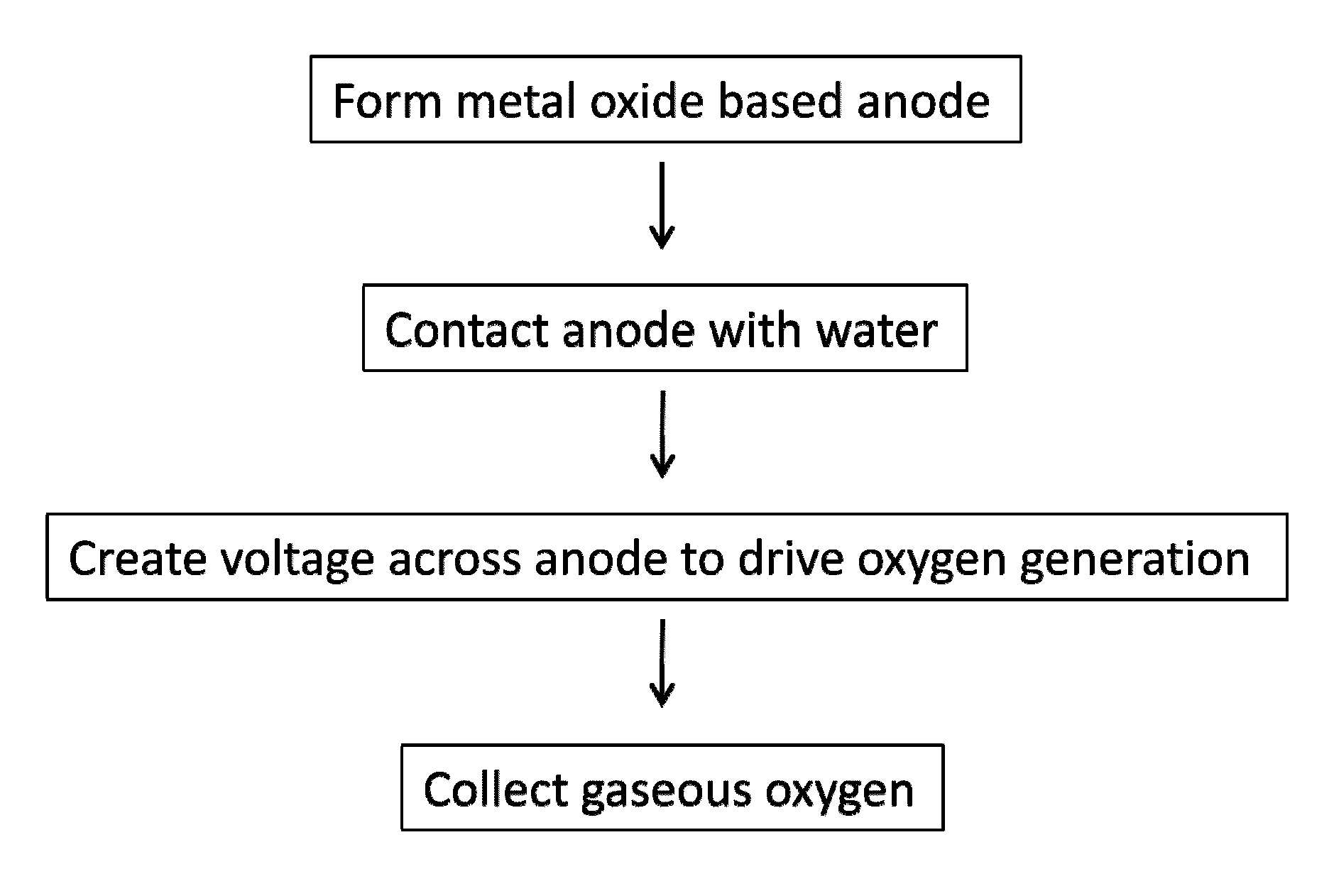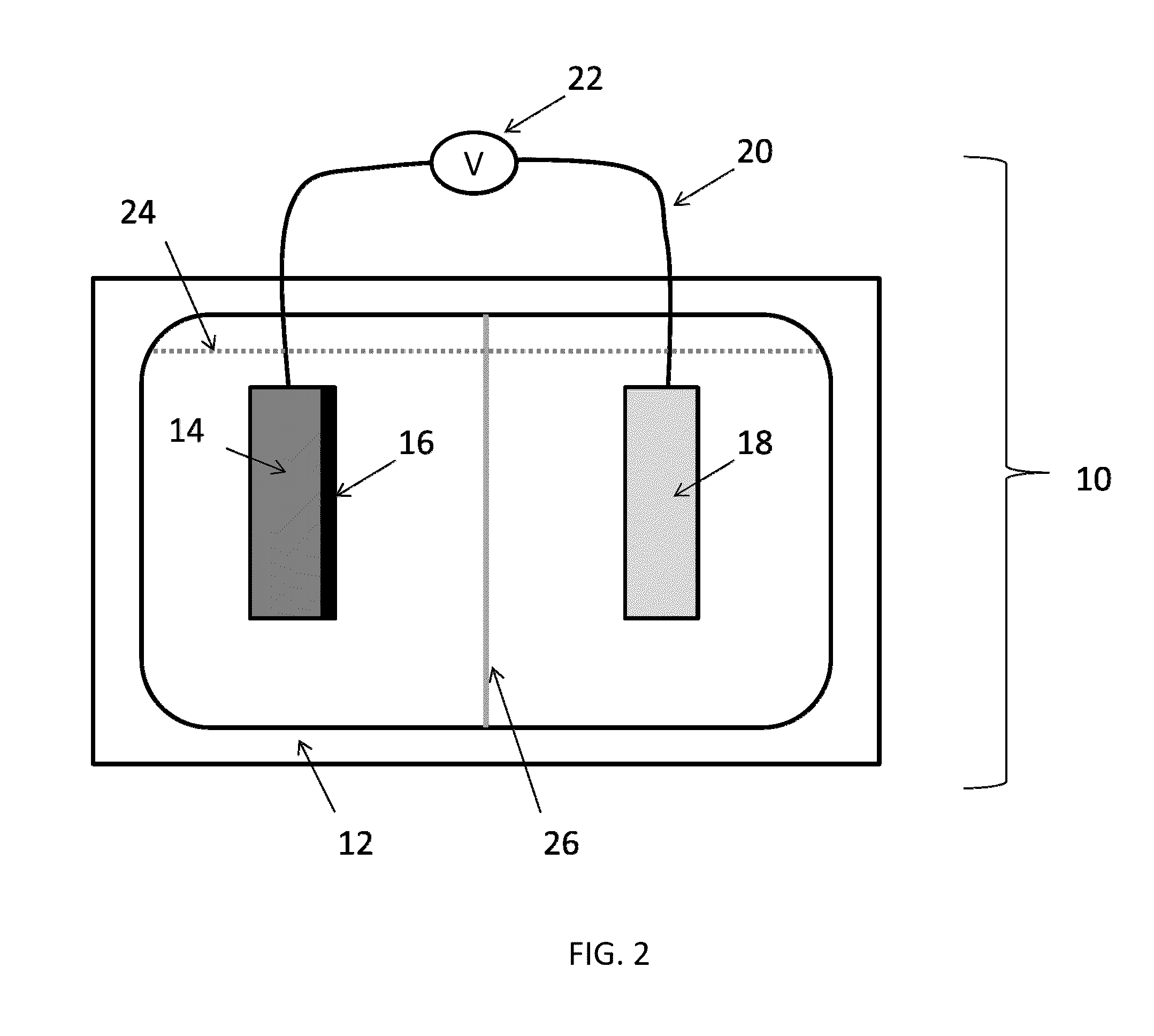Efficient water oxidation catalysts and methods of energy production
- Summary
- Abstract
- Description
- Claims
- Application Information
AI Technical Summary
Benefits of technology
Problems solved by technology
Method used
Image
Examples
example 1
Formation of a Co3O4 Catalytic Coating on a Cobalt Substrate
[0050]A cobalt foil sheet and cobalt wire is obtained from American Elements, Los Angeles, Calif. The cobalt foil or sheet is placed on the surface of a hotplate pre-heated to 350° C. exposed to air at ambient conditions for 6 hours. The formation of a layer of black oxide is observed on the metal surface. The formation of oxides are repeated with wires or foils of Fe, Cu, and Zn each with similar results.
[0051]The resulting Co3O4 / Co materials are characterized by SEM (scanning electron microscopy) for surface morphology, and by electrochemical measurement to verify catalytic activity for water oxidation. The surface morphology of the surface of a cobalt foil before heating and after heating is illustrated in FIG. 3. Heating in the presence of air produces wall-like structures with dimensions in nanometer range.
[0052]The Co wires (1 mm in diameter) are subjected to heating at 350° C. for up to 14 hours while the growth of n...
example 2
[0053]Cyclic voltammetry of the metal oxide based anodes of Example 1 are analyzed in a two chamber cell. As comparison, Pt is also studied as the working electrode. The electrolyte (pH 7.0, phosphate buffer) is purged thoroughly with argon prior to use. A voltage is applied to the electrode and scanned at different scan rates, typically in the range of 10-100 mV / s. CV analyses confirmed that, with similar physical dimensions (apparent surface area), Co wire / Co3O4 electrode provides much higher current density or much less over potential, as compared to Pt wire electrode. FIG. 5.
example 3
Oxygen Production at a Metal Oxide Based Anode
[0054]The electrochemical cell of Example 2 is used with an installed an optical oxygen sensor (OceanOptics, Inc., Dunedin, Fla.) next to the Co wire / Co3O4 electrode. The oxygen sensor is placed ˜2 mm over the Co wire / Co3O4 working electrode. The entire system is sealed from the environment using rubber septa in ground glass joints attached to the electrochemical cell housing and purged of air by bubbling with He gas (or other inert gas, e.g., N2, Ar). The working electrode is posed at 0.6, 0.8, 1.0, 1.2, 1.4 and 1.6 V vs. Ag / AgCl reference electrode for about 15 min under each of the applied potentials. The concentration of oxygen in the electrode is recorded continuously during each test. FIG. 6 illustrates that when the potential of the working electrode is ramped up from 0.6 to 1.6 V at 0.2 V intervals (15 min per step), significant oxygen formation is detected at 1.2 V vs. Ag / AgCl. The trend of the change of oxygen concentration als...
PUM
 Login to View More
Login to View More Abstract
Description
Claims
Application Information
 Login to View More
Login to View More - R&D
- Intellectual Property
- Life Sciences
- Materials
- Tech Scout
- Unparalleled Data Quality
- Higher Quality Content
- 60% Fewer Hallucinations
Browse by: Latest US Patents, China's latest patents, Technical Efficacy Thesaurus, Application Domain, Technology Topic, Popular Technical Reports.
© 2025 PatSnap. All rights reserved.Legal|Privacy policy|Modern Slavery Act Transparency Statement|Sitemap|About US| Contact US: help@patsnap.com



